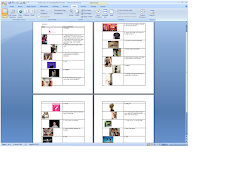Bookends of War video:
http://etec.hawaii.edu/etecvideos/videos/bow/
Inside Kapunahala video:
http://etec.hawaii.edu/etecvideos/videos/kap/
With the ‘Bookends of War’ project, students are put into groups where they work on different parts to create the classroom website. One student is taught the skills needed and then goes back to their group to teach everyone else what needs to be learned. Cooperation is seen in this classroom, and their knowledge of technology increasing daily. Students see technology as aiding them in showing others what they have learned, and a great way to prepare for future jobs when they get older.
With the ‘Inside Kapunahala’ project, students that struggle are given opportunities to create commercial story boards and film short video clips to help them be better at communication skills and using technology. Students have found they can communicate more clearly from participating in this program, which has helped them in other classes with participation points because they can vocalize their thoughts and opinions better. Also, they find creating the story boards quite fun, because they get to write and draw pictures. Their involvement with technology enhances their confidence and abilities to learn and produce projects.

